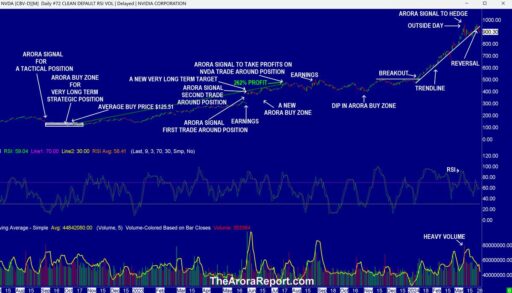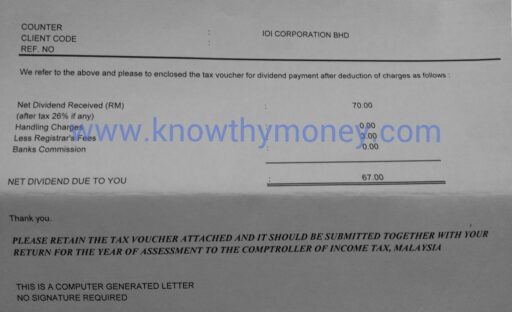Bank of America, the nation’s second-largest bank, has recently seen its stock surge, outperforming both the S&P 500 composite and its industry peers. With an upcoming earnings report and various factors at play, investors are keenly watching for signs that might indicate the future direction of the stock. This article delves into the current trends, valuation metrics, and strategic positioning of Bank of America, providing an investor’s guide to making informed decisions.
Key Takeaways
- Bank of America’s stock has experienced a significant 15.2% surge over the past month, surpassing the gains of the S&P 500 and its industry.
- Despite its recent performance, Bank of America holds a Zacks Rank #3, suggesting it may perform in line with the broader market in the near term.
- The company’s forward P/E ratio of 11.86 indicates a premium compared to the industry average, reflecting investor expectations of future earnings.
- Upcoming earnings report anticipates a year-over-year decline in earnings per share and revenue, signaling potential challenges ahead.
- Recent revisions in earnings estimates and analyst opinions highlight the importance of short-term business trends in shaping the stock’s outlook.
Recent Performance and Market Comparison


Bank of America’s Stock Surge Over the Past Month
Bank of America has demonstrated a remarkable performance over the last month, with its shares surging by +15.2%, outpacing both the broader market and its industry peers. This growth is notably higher than the Zacks S&P 500 composite’s +4% and the Zacks Banks – Major Regional industry’s +9% increase.
The stock’s robust ascent reflects investor confidence and positions Bank of America favorably against its competitors.
Here’s a quick comparison of Bank of America’s stock performance against the market and its industry:
| Metric | Bank of America | Zacks S&P 500 Composite | Zacks Banks – Major Regional Industry |
|---|---|---|---|
| 1-Month Performance | +15.2% | +4% | +9% |
The question on investors’ minds is whether this uptrend can be sustained in the coming months, given the dynamic nature of the market and various external factors.
Comparison with Zacks S&P 500 Composite and Banks – Major Regional Industry
Bank of America Corporation (BAC) has demonstrated a notable performance over the past month, with its shares surging by +15.2%, outpacing the Zacks S&P 500 composite’s more modest gain of +4%. This growth also eclipses the 9% increase seen within the Banks – Major Regional industry, where Bank of America is a key player.
The industry’s average PEG ratio, a metric that considers expected earnings growth alongside the P/E ratio, stands at 1.64, while Bank of America’s PEG ratio is slightly higher at 1.69. This comparison suggests that Bank of America’s stock might be priced more optimistically in terms of growth expectations compared to its industry peers.
The Zacks Industry Rank places the Banks – Major Regional industry in the top 40% of over 250 industries, indicating a strong industry position that could bode well for Bank of America’s stock. However, investors should keep an eye on the industry’s performance as it can significantly influence individual stock movements.
With a Zacks Rank of #3 (Hold), Bank of America’s stock is considered to be stable with potential for future growth, although it does not currently hold the more coveted #1 (Strong Buy) rank. The Zacks Rank has historically been a reliable indicator of stock performance, with #1 ranked stocks averaging a return of +25% annually since 1988.
Implications of Bank of America’s Zacks Rank #3
Bank of America’s Zacks Rank #3 (Hold) is a pivotal indicator for investors, as it reflects the bank’s potential to perform in line with the broader market in the near term. The Zacks Rank is a proven system that has historically outperformed, with a track record of stocks rated #1 returning an average of +25% annually since 1988. The recent 0.31% upward revision in the Zacks Consensus EPS estimate for Bank of America suggests a positive trend in analyst sentiment.
The Zacks Rank harnesses the power of earnings estimate revisions, which are a significant factor in stock performance. Bank of America’s current rank indicates that it may not outshine the market but also won’t lag significantly behind.
The valuation metrics, however, paint a different picture. Bank of America is trading at a premium compared to its peers, with a valuation grade of D. This discrepancy between the Zacks Rank and valuation metrics could lead to a nuanced investment decision-making process.
Upcoming Earnings Report and Analyst Expectations


Anticipated Earnings and Revenue for the Upcoming Quarter
As investors eagerly await the upcoming quarterly financial report from Bank of America, the consensus earnings estimate stands at $3.26, marking a slight decrease of -4.2% from the previous year. Over the recent month, this estimate has seen a minor adjustment of -1.1%. The anticipated sales revenue is projected at $24.96 billion, suggesting a modest year-over-year growth of +1.9%.
The consistent outperformance of Bank of America in surpassing consensus EPS and revenue estimates in the past four quarters bodes well for investor confidence.
The table below encapsulates the forecasted financial figures for Bank of America:
| Fiscal Year | Consensus Earnings Estimate | Year-over-Year Change | Consensus Sales Estimate | Year-over-Year Change |
|---|---|---|---|---|
| Current | $3.26 | -4.2% | $24.96 billion | +1.9% |
| Next | $3.26 | -1.1% | $100.5 billion | +5.8% |
While the focus is often on earnings, it’s crucial to acknowledge that long-term earnings sustainability is closely tied to the company’s ability to grow its revenues. The forward-looking revenue estimates for the current and next fiscal years are $100.5 billion and $100.25 billion, respectively, indicating a stable financial trajectory for Bank of America.
Year-Over-Year Performance and Analysts’ Revisions
Bank of America’s year-over-year performance is closely monitored by investors, with particular attention to earnings and revenue projections. The consensus sales estimate of $24.96 billion for the current quarter reflects a year-over-year change of +1.9%. This figure, alongside the anticipated earnings for the current and next fiscal years, provides a snapshot of the bank’s financial trajectory.
The consensus earnings estimate for the next fiscal year is $3.26, marking a -4.2% change from the previous year. Over the past month, this estimate has been adjusted by -1.1%, highlighting the dynamic nature of market expectations.
Analysts’ revisions play a crucial role in stock valuation, as changes in earnings estimates can significantly influence investor behavior and stock price movements. The table below summarizes the recent changes in consensus estimates for Bank of America:
| Fiscal Year | Consensus Earnings Estimate | Year-Over-Year Change |
|---|---|---|
| Current | $100.5 billion | +5.8% |
| Next | $100.25 billion | -0.2% |
It is evident that earnings estimate revisions are a vital indicator of a company’s future performance and are therefore a key factor in investment decision-making.
Impact of Earnings Estimate Revisions on Stock Performance
The relationship between earnings estimate revisions and stock performance is well-documented, with adjustments in earnings forecasts often leading to immediate stock price movements. Analysts’ revisions reflect the latest business trends and their impact on future earnings, which in turn influence the stock’s fair value. A rise in the fair value suggests a potential increase in the stock price, as it attracts investor interest.
The Zacks Rank system capitalizes on this correlation by incorporating these revisions into its rating model, which has shown a strong connection with stock performance.
Bank of America has consistently surpassed consensus earnings and revenue estimates in recent quarters, reinforcing investor confidence. The table below summarizes the company’s performance against estimates:
| Quarter | EPS Estimate | EPS Actual | Revenue Estimate | Revenue Actual |
|---|---|---|---|---|
| Q1 2022 | $0.75 | $0.80 | $22.8B | $23.2B |
| Q2 2022 | $0.77 | $0.85 | $22.5B | $22.9B |
| Q3 2022 | $0.71 | $0.74 | $22.2B | $22.6B |
| Q4 2022 | $0.68 | $0.70 | $22.0B | $22.4B |
This trend of positive earnings surprises can be a significant factor for investors when considering Bank of America’s stock for their portfolios.
Valuation Metrics and Stock Pricing


Bank of America’s Current Valuation Grade
Bank of America’s valuation grade reflects its market positioning relative to its peers. Currently, the bank holds a D grade, suggesting it trades at a premium compared to others in the industry. This assessment is based on a variety of valuation metrics.
The Forward P/E ratio of Bank of America stands at 11.86, which is higher than the industry average of 11.21. This ratio is a significant indicator as it compares the company’s current share price with its per-share earnings, hinting at investor expectations of future growth.
While the valuation grade and Forward P/E ratio are important, they are just part of the investment mosaic. Investors should consider the full picture, including upcoming earnings, historical performance, and strategic initiatives, before making investment decisions.
Here is a quick glance at some of the key valuation metrics for Bank of America:
| Metric | Value |
|---|---|
| Market Cap | $290.85 billion |
| Enterprise Value | $286.99 billion |
| Forward P/E Ratio | 11.86 |
These figures underscore the bank’s substantial market presence and the premium it commands in the current financial landscape.
Forward P/E Ratio Comparison with Industry Average
When assessing the valuation of Bank of America (BAC), the Forward P/E ratio offers a significant benchmark. BAC’s Forward P/E ratio currently stands at 11.86, which represents a premium when compared to the industry’s average Forward P/E of 11.21. This premium suggests that investors may expect higher earnings growth from BAC relative to its peers.
The Forward P/E ratio is a dynamic measure that can fluctuate with market conditions and earnings expectations. It’s crucial for investors to monitor these changes as they can impact the perceived value of a stock. The table below presents a concise comparison of BAC’s valuation metrics against the industry average:
| Metric | Bank of America (BAC) | Industry Average |
|---|---|---|
| Forward P/E | 11.86 | 11.21 |
| PEG Ratio | 1.69 | 1.64 |
The PEG ratio, which adjusts the P/E ratio for expected earnings growth, further indicates that BAC is valued more richly than the industry norm. With a PEG ratio of 1.69, it exceeds the industry’s average, hinting at a potentially optimistic growth outlook from investors.
Understanding these valuation metrics is essential for making informed investment decisions, especially in a market where valuation disparities can signal future performance.
Changes in Consensus Earnings Estimates and Valuation
The dynamic landscape of consensus earnings estimates is a critical factor for investors to consider when evaluating Bank of America’s stock valuation. The consensus earnings estimate of $3.14 for the current fiscal year indicates a year-over-year change of -8.2%. This estimate has seen a slight adjustment of -0.4% over the recent period, reflecting analysts’ revisions based on short-term business trends.
For the subsequent fiscal year, analysts project a consensus earnings estimate of $3.26, which represents a -4.2% change compared to the previous year. Notably, this figure has been revised downward by -1.1% in the past month, suggesting a cautious outlook from analysts.
The valuation of Bank of America’s stock hinges on the interplay between current market prices and the perceived fair value derived from future earnings projections. A stock’s fair value is influenced by earnings estimate revisions, as they signal the potential direction of the stock’s price movement.
Earnings estimates are pivotal in shaping investor sentiment, as they encapsulate the anticipated performance of the company. A consistent track record of surpassing consensus EPS and revenue estimates can bolster investor confidence, while valuation metrics ensure that investment decisions are grounded in the economic reality of the company’s worth.
Investment Considerations for Bank of America


Analyzing the Zacks Rank and Earnings Estimate Revisions
The Zacks Rank is a proprietary model that reflects changes in earnings estimate revisions and has a strong correlation with stock performance. Bank of America currently holds a Zacks Rank of #3 (Hold), indicating a neutral stance on the stock’s outlook. Over the last month, the Zacks Consensus EPS estimate for Bank of America has seen a slight uptick of 0.31%, suggesting a modestly improved earnings outlook.
Earnings estimate revisions are a critical factor in stock valuation, as they represent the collective judgment of analysts on the future financial performance of a company. A positive revision trend can lead to an increase in the stock’s fair value, potentially driving up its market price. Conversely, negative revisions can have the opposite effect. For Bank of America, the Zacks Consensus Estimates anticipate earnings of $3.12 per share and a revenue of $99.63 billion, indicating shifts in the financial landscape.
It’s essential to monitor these revisions as they can serve as a leading indicator of the stock’s future direction. While the Zacks Rank provides a snapshot of the current sentiment, the actual revisions to earnings estimates give investors a deeper insight into the company’s potential.
Understanding the Significance of Forward P/E in Investment Decisions
The forward P/E ratio is a critical metric for investors aiming to gauge the valuation of a company like Bank of America. It compares the stock price to the expected earnings per share (EPS) over the next 12 months, offering a glimpse into how the market values the company’s future growth prospects. Unlike the trailing P/E, which looks at past earnings, the forward P/E is inherently a forward-looking measure and can be a more accurate indicator of future performance.
When considering Bank of America’s stock, the forward P/E ratio provides insight into whether the stock is trading at a premium or discount relative to its historical valuation and industry peers.
Here’s how Bank of America’s forward P/E stacks up against the industry average:
| Metric | Bank of America | Industry Average |
|---|---|---|
| Forward P/E Ratio | 11.86 | 11.21 |
Bank of America’s forward P/E of 11.86 suggests a premium compared to the industry’s average of 11.21. This premium could imply that investors expect higher earnings growth from the bank compared to its peers. However, it’s essential to consider this in the context of the company’s historical performance and the broader market conditions.
Short-Term Business Trends and Analysts’ Outlook
Bank of America’s stock performance is closely monitored by investors, especially in light of recent shifts in the market. Analysts are recalibrating their 2024 outlooks to reflect powerful structural forces and emerging trends.
The short-term business trends for Bank of America suggest potential value in the larger, diversified U.S. banks, despite the possibility of increased volatility. This is due to the transitioning of credit, economic, and policy cycles that are currently influencing the financial sector.
The current earnings season in Europe has been underwhelming, and demand from China remains a challenge. These external factors could have implications for Bank of America’s performance.
Analysts’ outlook for Bank of America remains cautiously optimistic, with a focus on the bank’s strategic initiatives and ability to navigate through a higher interest-rate environment than that of the pre-pandemic era. The following table summarizes the key points from recent analyst reports:
| Date | Key Takeaway |
|---|---|
| Jan 2, 2024 | Geopolitical events impacting market returns |
| Jan 8, 2024 | Higher interest-rate environment anticipated |
| Jan 16, 2024 | Recalibration of 2024 themes due to secular trends |
| Mar 4, 2024 | Potential value in diversified U.S. banks despite volatility |
Future Outlook and Strategic Positioning


Projected Earnings and Revenue for the Current Fiscal Year
Bank of America’s consensus earnings estimate for the next fiscal year stands at $3.26 per share, reflecting a slight decrease of 4.2% from the previous year. Over the recent month, this estimate has seen a marginal adjustment, dipping by 1.1%. This projected earnings trend underscores the importance of monitoring estimate revisions for investors.
The anticipated changes in earnings and revenue are critical gauges of the bank’s fiscal health and future performance.
The following table encapsulates the expected year-over-year changes in revenue:
| Fiscal Year | Estimated Revenue | Year-Over-Year Change |
|---|---|---|
| Current | $100.5 billion | +5.8% |
| Next | $100.25 billion | -0.2% |
Revenue growth is a vital indicator of a company’s financial well-being, and Bank of America’s forecast suggests a stable outlook with a modest increase in the current fiscal year followed by a slight contraction in the next. The bank’s ability to sustain earnings growth is contingent upon its success in driving revenue higher.
Bank of America’s Strategic Initiatives and Market Position
Bank of America has been at the forefront of integrating digital technology into its services, a move that has significantly enhanced customer engagement. In 2023, clients interacted 673 million times with Erica, the bank’s virtual financial assistant. This represents a substantial 28% increase from the previous year, reflecting the bank’s successful adoption of AI and machine learning to improve client experience.
The bank’s strategic initiatives are not limited to digital advancements. As a global entity, Bank of America has continued to expand its reach and strengthen its market position through various channels:
- Research & insights offering original perspectives on the economy and global transformation.
- Consumer Checkpoint providing real-time data on U.S. consumer spending and financial well-being.
- BofA Global Research delivering award-winning analysis and investment insights.
Bank of America’s commitment to innovation and customer-centric services has solidified its standing in the financial industry, ensuring a competitive edge in a rapidly evolving market.
Investor Sentiment and External Factors Influencing Stock Trajectory
Investor sentiment towards Bank of America is shaped by a myriad of factors, both internal and external. Economic indicators such as interest rates play a pivotal role in determining the attractiveness of financial stocks. With the Federal Reserve’s stance on interest rates contributing to narrow stock market leadership, investors are closely monitoring policy changes that could affect the bank’s stock performance.
External factors, including geopolitical tensions and shifts in global markets, also weigh heavily on investor sentiment. For instance, the movement into Emerging Market equities and changes in expectations for global economic growth can redirect investment flows, impacting U.S. equities like Bank of America.
The interplay between earnings estimate revisions and broader market trends is crucial in shaping the trajectory of Bank of America’s stock. While immediate price changes may be triggered by media releases or rumors, it is the fundamental facts, such as fiscal responsibility and sound business prospects, that underpin long-term investment decisions.
The table below summarizes key external factors and their potential impact on investor sentiment:
| Factor | Potential Impact on Investor Sentiment |
|---|---|
| Interest Rate Changes | Could lead to shifts in stock market leadership |
| Geopolitical Tensions | May cause market volatility and affect stock prices |
| Global Market Shifts | Influences investment flows and sector performance |
| Economic Growth Expectations | Alters investor outlook on corporate earnings potential |
Conclusion
In summary, Bank of America’s stock has shown a notable performance over the past month, outpacing the S&P 500 and its industry peers. While the stock is currently trading at a premium and faces a projected earnings decline, it holds a Zacks Rank #3 (Hold), suggesting it may align with the broader market’s performance in the near term. Investors are advised to keep an eye on the upcoming earnings report and any changes in analyst estimates, as these could provide further insights into the bank’s fiscal health and stock trajectory. With the investment community closely watching, the decisions made now could be pivotal for those looking to capitalize on Bank of America’s future movements in the market.
Frequently Asked Questions
What has been the recent performance of Bank of America’s stock?
Over the past month, shares of Bank of America have returned +15.2%, outperforming the Zacks S&P 500 composite’s +4% change and the Zacks Banks – Major Regional industry’s gain of 9%.
How does Bank of America’s valuation compare to its industry peers?
Bank of America is graded D on valuation, indicating it is trading at a premium to its peers, with a Forward P/E ratio of 11.86 compared to the industry average of 11.21.
What are analysts expecting for Bank of America’s upcoming earnings report?
Analysts expect Bank of America to post earnings of $0.77 per share in the upcoming report, marking a year-over-year decline of 18.09%, with revenue anticipated to be $25.21 billion, a decrease of 3.99% compared to the same quarter of the previous year.
What is the significance of Bank of America’s Zacks Rank #3?
Bank of America’s Zacks Rank #3 (Hold) suggests that the stock may perform in line with the broader market in the near term, influenced by earnings estimate revisions and other related factors.
How have recent earnings estimate revisions impacted Bank of America’s stock?
The Zacks Consensus Estimate for Bank of America’s current quarter earnings has changed by -1.2% over the last 30 days, and the estimate for the current fiscal year has changed by -0.4%, which may affect the stock’s near-term trajectory.
What is the future earnings and revenue outlook for Bank of America?
For the current fiscal year, the Zacks Consensus Estimates anticipate earnings of $3.12 per share and a revenue of $99.63 billion, signifying shifts of -8.77% and +1.06%, respectively, from the last year.





